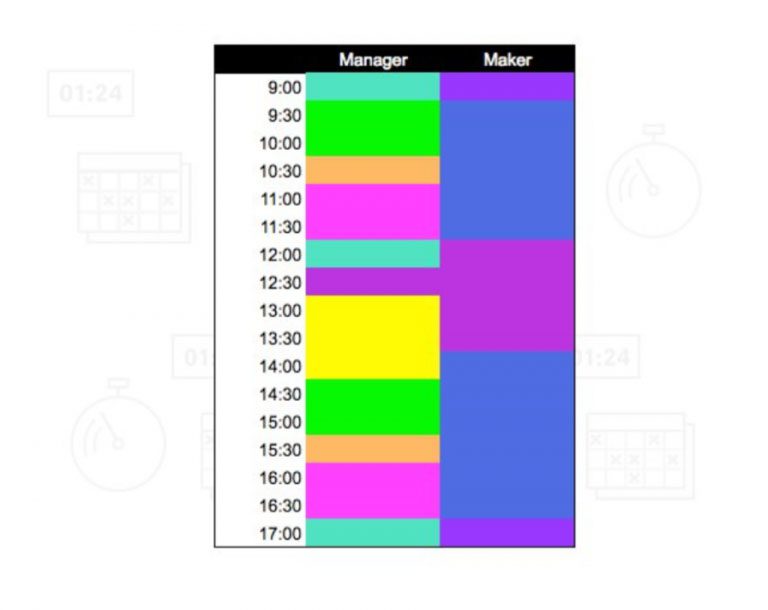Several tools can assist us when it comes to managing digital teams and projects. You can always go “old school” with a whiteboard, a few sticky notes, and a paper calendar, but as your company grows, things speed up, and you need the help of online management tools. At TREIZE, we work with Active Collab. It’s not only an essential tool for managing our projects and coordinating our team, but also, in recent days, for our learning.
Yes, this week, we discovered one of their gems: the Managing Digital Projects guide.
A real find! I have to say, I wouldn’t be surprised if this guide becomes an indispensable project management bible in the coming years.
what are you learning from this guide?
You ask yourself questions like :
- How can I manage all my clients?
- What are the steps to create a project estimate?
- What are the golden rules for a good client meeting?
- Why is agile methodology often used in digital projects?
- What are the three most important things to know as a project manager?
- What separates a great team from an ordinary one?
This guide answers all these questions, and it also provides examples and shares practical information that can be easily applied in your companies. It demystifies taboos, offers tips, and, 12 chapters later, turns you into a project management champion!
Part 1: Communicating with the client and various project initiation methods.
The first part specifically covers client selection, how to manage them internally, and how to make accurate estimates when the project is at stage 0. One chapter also provides an overview of budgeting and legal considerations when launching your business.
Part 2: project management
The second section focuses more on the company’s internal operations. It covers situations where working in an Agile methodology is appropriate, the role of a project manager, project planning, problem management, and progress monitoring.
How to make the team as productive as possible? What do creative professionals appreciate, and what do they dislike? The guide poses questions, encourages you to reflect, and then provides in-depth answers.
For example, why do developers and designers dislike meetings? Well, because as creatives, they enter a zone when they work on a project. They prefer to have extended blocks of uninterrupted work. They don’t have the luxury of breaking their work into 1-hour time slots when they need half a day to complete something.

Knowing this, there are several changes that can be integrated into the organization of the company to make employees happier:
- Offer flexible working hours. If someone needs to leave an hour early on Monday, why not? If our programmer has a commitment, they can make up for it on another day this week.
- Schedule meetings at the beginning of the day. This way, people don’t have to switch gears in the middle of work and can focus on their tasks without constantly watching the clock for the meeting.
- Limit work to 40 hours per week, rather than 8 hours per day. Time is much better distributed this way. If there’s an hour left at the end of the day, instead of waiting, one can leave the office and make better use of that time the next day, for example.
Often, it’s the little details that, in daily practice, make all the difference in terms of productivity.
Part 3: collaboration and progress
Collaboration. It’s an essential element for all companies, and even a very important competitive advantage.
What makes a good team? How to track time, issue invoices, and control the budget on schedule? These are all questions you’ll find answers to in Part 3.
I’ve always wondered why we exchange so many emails when talking face to face or over the phone can resolve so many more issues. With Managing Digital Projects, I was able to answer my question and understand what the best communication strategy is for stakeholders. By constantly exchanging emails, response times are often very long, and decisions have time to become polarized. Clients also make fewer compromises. Phone calls, on the other hand, require a more significant “human investment” and mutual availability. In-person meetings, however, are vital at the beginning and end of projects because they allow for introductions and much faster project finalization. Each point is discussed one by one, and it’s sorted out swiftly.
Part 4: Why do organizations not grow?
Finally, the last chapter provides advice on “what to do” today to ensure that your company remains competitive in 10 years.
I quickly learned that the work of a project manager is not measured by the amount of time spent on a project but by the amount of work the team has been able to accomplish.
The team is in the spotlight; project management happens behind the scenes of success. It’s about working to make others more productive. This section really changed my image of the “boss” and the typically controlling view we have of managers. A good manager is more like a conductor leading a team, a positive energy force that solves problems before they arise and works to make their colleagues’ lives easier.
In the end, the only advice I give you, whether your company specializes in the web or not, is to read this bible. Without a doubt, it’s a reference tool for all companies that are part of the digital world in some way or another.


